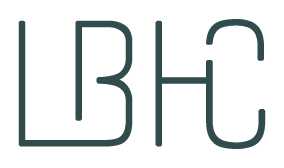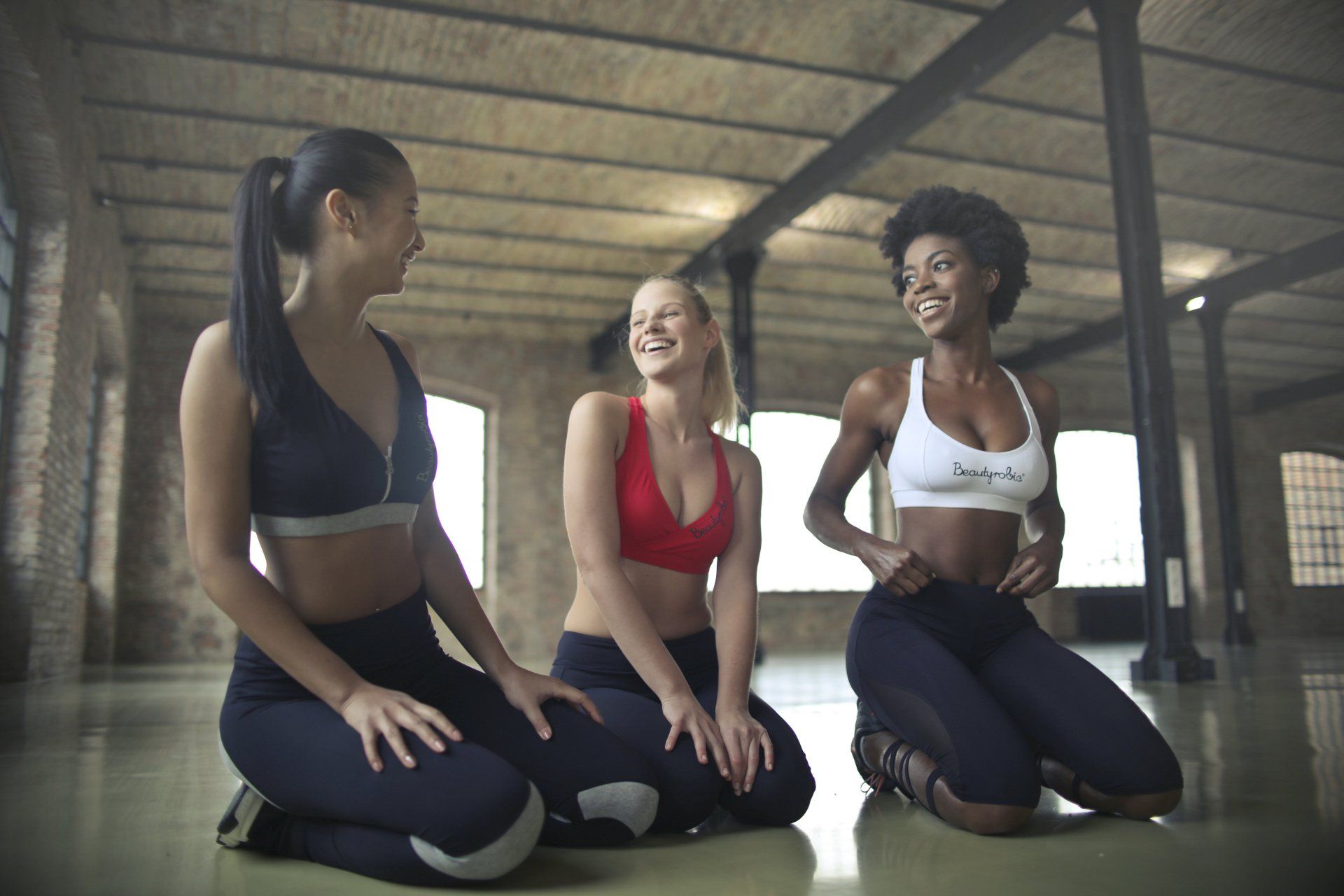Blog Layout
Improving Body Awareness
Becoming More Aware in Your Own Body

Modern society does not lend itself to an environment that fosters body awareness. Through processed meals, long hours at a desk and a culture of work hard play hard, the deviation between being connected with our body and totally out of touch continually widens. The more out of touch one is with their body, the harder it is to recognize when it’s screaming at us to rest, eat better and move differently.
As with most things, it is important to define body awareness before figuring out how to best improve it. Body awareness, simply put, is one’s awareness of their body in space. More broadly, awareness can encompass the body, mind, spirit etc. as all are integrated into one body. Often it becomes easy to become detached from these aspects of oneself through heavily processed foods, numbing with drugs, TV or food and ignoring natural body cues that become dulled. I believe the larger this gap becomes, the more disconnected you become with yourself, fostering poor health. Below are a few suggestions that will hopefully provide the missing link between current unaware lifestyle practices and increased body awareness.
Exercise and Meditation
When I would teach a client a new exercise, I would often ask where they were feeling it. Meaning, what muscles did they feel working? I would be baffled when the response would be “nothing”. Nothing? Even if you name the wrong muscle groups, you have to feel something, right? I realized that many of these individuals who were well into their 70’s were working out for the first time in their lives. They may not even have the language or body awareness to even begin to answer this question. In these cases, it is essential to become extremely present with each exercise, focusing on what sensations occur with each movement. This may include noticing when the heart rate speeds up, feeling a burning sensation towards the end of a set and being aware of the equipment in your hand to name a few. Over time, body awareness is improved, helping to tune in to your natural state of being, noticing when things are off. Exercise and meditation are both great tools to work on improving this skill set and getting in touch with one’s own body cues.
Investigating Behaviors
If you’ve been on auto pilot for a while, it might take some questioning of each behavior to truly get to the root cause of various habits. This may require working with a specialist such as a Health Coach or Psychologist to even understand what questions to ask. For example, you might ask:
Why do I finish the food on my plate even when I am not hungry?, Why do I feel guilt after eating a particular food?, Why do I either go for a run every day or not at all? The list can be endless. Digging to the root of these various habits can make you more aware of how you treat your body and why. Once your habits are exposed, you can begin creating solutions to address any behaviors that are causing poor health and decreased body awareness.
Monitoring Inner Dialogue
Gaining control of thoughts and how you speak to yourself is imperative for creating an accurate awareness of your body. If you are constantly picking apart all of your flaws, telling yourself you can never achieve that goal or viewing your life in an entirely negative light, you will continue to create a warped sense of your reality. In doing so, it becomes difficult to trust your body and mind, skewing true body awareness. While often this does require the help of a professional, there are some things that you can do. When a negative thought pops into your head, you can combat it with a positive spin on it. For example, “my thighs are so fat and disgusting” can be combated with “wow, how cool that I have these powerful legs that are getting stronger in the gym each day”. When a thought pops into your head ask yourself, would I talk to a friend the way I am speaking with myself? If not, seek to change the narrative.
Listening to Internal Cues
Part of the issue with becoming increasingly distant from your body’s natural state is being out of touch with natural internal cues. These cues signal hunger and fullness, exhaustion, various emotional states and so much more. If we are eating when watching TV, we start to distance ourselves from eating signals of satiety. Pouring another cup of coffee masks exhaustion. Distracting with unhealthy coping mechanisms diverts attention away from negative emotions. Becoming present in your own body is required to truly get in touch with these internal cues and make healthy choices about how to address them. Eating without distraction might help us to notice when we are full and not over eat. Taking a moment to meditate or going to bed earlier may help address exhaustion. Making time to plan a dinner with a friend can fill the soul and boost your mood. The only way to become aware of these things is to sit with uncomfortable feelings and really become tuned in to our own bodies.
Modifying the Narrative
Sometimes the biggest thing holding us back is the old narrative that you’ve been following. A simple example could include eating raw vegetables because you’ve been told they are healthy. However, every time you eat raw vegetables you notice bloating, increased bathroom frequency and upset stomach. Yet even though your body is giving you the signs to stop, you continue to eat these foods anyway because of this health narrative you believe. On a broader scale, this may include following an exercise program that no longer is giving results, a strict diet that you keep falling in and out of, denying yourself treats/rest/food and using exercise as punishment when you inevitably “fail”. It’s time to adjust these dogmatic beliefs and use your body as the guide for what is actually good for you, not what someone is telling you is good. If over time something isn’t working it’s time to try something new.

By Lauren Bauer
•
November 20, 2023
There was a term that my family coined during the holiday season called “Sport Eating”. Quite literally, eating just for the sport of it. I used to approach my holiday meals with this in mind: Enjoyment = stuffing yourself with as much food as possible. It was a bit of a disconnect when I felt sick to my stomach after a holiday meal; was this enjoyment? Over the years, I’ve changed my approach to the meals and parties, eating enough to truly enjoy the food but not so much that I feel sick. After all, there is nothing enjoyable about that. Here is how you can approach the holiday food fests with a strategy in mind: MYTH: I SHOULD FAST ALL DAY BEFORE A HOLIDAY PARTY There are typically two thought processes that can occur the day of the holiday party: 1. I shouldn’t eat all day so that I will be hungry enough to fit in all the food that will be at the party tonight. Or… 2. Two: I shouldn’t eat all day so that I can save the calories for the party that night. Both lines of thinking are highly problematic and in fact not the correct approach when going into a holiday party. It is best to eat normally throughout the day and not go to the party feeling ravenous. This will make it more likely that you will eat a reasonable amount as opposed to going to the party starving, over-eating and making less healthy food choices. I have never heard anyone say that they couldn’t wait to inhale all the broccoli when they were starving… STRATEGY: CHECK ALL FOOD OPTIONS BEFORE FILLING YOUR PLATE Typically, when eating buffet or potluck style, we start at the beginning of the line and work our way through to the end, selecting items that look good to us along the way. The problem with this is that we don’t know all our options ahead of time. And if we had, we might have decided against certain selections in favor of others. One simple way to resolve this issue is to take a quick circle around the buffet and get an idea of what food options are available before starting to fill your plate. This allows you to decide what you’d actually like to eat before filling up your plate on items you would have passed on. This creates a strategic approach to the buffet versus going in with no plan. STRATEGY: GO BACK TO THE BUFFET MULTIPLE TIMES There is no rule that you must make all your food choices in one go of the buffet. Instead of filling your plate up until it breaks, you can go back multiple times and eat smaller amounts each time. To make the best food choices, you can prioritize your selections in the following order: Veggies Protein Healthy Carbs Junk For example, start with a salad, move on to the steak, enjoy some sweet potatoes and finish it off with a cookie. Had you started off filling your plate with whatever you wanted, you would likely make poorer food choices and overeat. Take breaks in between rounds. If you methodically move through the buffet with this formula in mind, you’ll be in much greater control of your food choices. STRATEGY: DON’T STAND NEAR THE FOOD It is best to mingle around the party than stand near the food the whole time. In part, this keeps you on your feet and moving versus sitting on the couch with the appetizers in arms reach. It also allows you to focus on other aspects of a party aside from the food. Sometimes, we can get so fixated on all the foods we can consume that we think having the best time at a party is dependent upon how much good food we can consume. It is easy to lose sight of the other important aspects of the party such as getting together with friends and family and appreciating their company. It is important to remind ourselves of this to be aware of how we are approaching holiday parties. STRATEGY: PASS ON THE BEVERAGES AS OFTEN AS YOU CAN The quickest way to consume a huge amount of calories is found in the Christmas punch bowl or the festive cranberry mistletoe margarita. Many of these drinks are loaded with sugary sodas and juices on top of high calorie alcohol. If you can avoid these drinks or consume them as minimally as possible, you’ll be better off. Diet sodas and seltzer water can be much better options to enjoy a special drink without the calories. Most importantly, enjoy the holiday season with your loved ones!

By Lauren Bauer
•
October 25, 2023
I have developed a capacity to continually grind away at my goals and the work that needs to be done to reach them. But what I sacrifice in the process is the ability to slow down, enjoy and be present in life. Often, I become so disconnected from this that I think I might just be working hard just for the sake of feeling like I need to, without a lot of discretion as to what that hard work consists of or if it aligns with my values. Vacation is a beautiful opportunity to create some distance between you and your life, literally and metaphorically. My most recent trip allowed me to really take a hard look at my goals and decide if my life was aligned with making them a priority. The beautiful thing about vacation is that it rips you out of your normal routine, places you around new people or friends you haven't seen in a while and allows you to gain a new perspective as a result. Once I had some distance from my usual life and the routine that goes along with it, I realized that what I said my top priorities were did not align with my daily actions. In other words, even though I said my top priorities were focusing on growing my business and taking care of my personal health and fitness, I wasn’t prioritizing my daily tasks around these goals. In fact, they were often the first tasks I pushed off to the next day because I was so exhausted, entering the realm of burnout. I was making less content than I wanted, cooking less, going to the gym less all while feeling more exhausted. If anyone had described this person to me and asked me to identify them, I would have said “that’s not me”. The values that I held most precious were the ones I was avoiding the most. It's funny how you can trick yourself into believing that you just need to continue to work harder in order to achieve your goals when your body, mind and soul are screaming for a break. Yet a break is exactly what you need to have the capacity to achieve those goals. A break centers you around who you are today and who you want to be, regifting inspiration as a result. When is the last time you’ve stepped away from your normal routine? When is the last time you’ve spent quality time with the people you love? When is the last time you’ve experienced “new”? In order to gain a clear perspective on your life, it may first require stepping away from the regular routine and creating some distance so that you have the space to truly take a look. This doesn’t have to be a vacation but instead it could look like exploring your local museum you’ve never been to, sitting in a new coffee shop with a good book or walking on a hiking trail you’ve never explored. I challenge you to do something that reinvigorates your life so that you can have the space to analyze the following: Who am I now and who do I want to become? Do the values I proclaim to hold most dear truly reflect in my daily actions? What action steps do I need to take to bridge this gap? Get a notebook out and really dive into these questions. It’s never easy for the ego to take this type of analysis but being honest about your life and what you would like it to look like is the only way growth can occur. I promise this is much less painful than living a life that you don’t actually want to be living. You deserve to be the best version of yourself that you can become.

By Lauren Bauer
•
October 2, 2023
At the age of 14, I was walking onto the big, scary high school campus that was over triple the size of my middle school. True to my over-achiever personality, I had signed up for the most challenging program my school had to offer. That alone could have had my schedule packed for hours but I chose to sign up for a few different after school clubs, join the swim team, do volunteer work, manage some semblance of a social life and make to-do lists as long as a CVS receipt. I’m not saying this to brag…I’m saying this because I genuinely believed packing as much as possible into my schedule and staying busy constantly was important; it’s what made you productive and successful. Quite honestly, I’m not even sure I could tell you why I believed this, I just knew it was what I “should” be doing. Now that I can reflect on this time in my life, I can’t say I was doing any one thing particularly great. I was just managing to keep my head afloat in many areas of my life, not doing any one at my best ability as a result. I would pull some late nights doing homework and studying, which inhibited how well I performed at swim practice. If I was more focused on doing well in swim, I might not spend as much time studying and so my grades would suffer. Many social activities weren’t purely social; they were a way to get together with friends while still studying for upcoming exams. This mindset purveyed throughout college and is still something that I wrestle with to this day. As a recovering over-achiever, I am still a goal-oriented person who wants to do well. But I have been working hard to reframe my approach. Instead of trying to do it all and falling short (I mean there is only so much time in a day) I prioritize simple habits daily. On the surface, they don’t seem like they do much but over time they make a big change. Making a To-do List…Not a Novel How often have you made a to-do list of twenty items, believing that you can get them all done in a day? Even when you only manage to get eight things done, you still somehow convince yourself that the next day will grant you more than 24 hours and you make your giant to-do list once more. They say the definition of insanity is to do the same thing over and over again while expecting a different result. Well, call me insane because I think I thought I could defy time. Digging a little deeper, I think crossing items off of a huge checklist stems from being addicted to the feeling of productivity. I’ve even conned myself into feeling productive by crossing off a bunch of the little things on my list (doing the dishes, mail a letter, return a package) while avoiding the things that are actually crucial (setting up that doctor’s appointment, sitting down to make content for my business or preparing for an upcoming presentation). Truly, this is a form of productive procrastination which seems like the biggest oxymoron there ever was. I have developed a simple process to making my daily to-do lists that circumvent this productive procrastination cycle: 1. Make a to-do list. 2. Keep it brief. 3. Identify the “frog” of the list and eat it down. Ok, I was with you Lauren until the last one… Ok, let me explain. First of all, limit yourself to making a to-do list that actually matters. When you have twenty tasks on a list, they are not all essential by a long shot. If you limit yourself to five items, you are bound to put the five most important things that will truly make the biggest difference and provide the most relief once they are done. Out of those five items, identify the frog. This is the one item that is the most important to get done and often the one you want to do the least. Then you eat that damn frog. You do that item first so that you ensure it is complete. If you find yourself kicking the can down the road when it comes to doing your workout, this is likely your frog of the day. Creating Pillars in Your Routine How exactly do you pair things down on your list? Sometimes we feel that every. single. thing. on the list is imperative. How do you decide what to cut? A tactic I’ve used to manage this is creating pillars in your to-do list. Do you notice patterns of particular task categories that seem to continually appear on your agenda? For example, you always mark down your workout, business assignments and household chores almost daily. These can be parsed into general categories of fitness, business and daily clean-ups. These are your pillars; the items that repeatedly need to get done daily. I created a reoccurring daily reminders list in my phone that repopulates these pillars daily so that I make sure I am working on some task that contributes towards them. Another way to look at this, is to ask the question: do the tasks on my list align with my values? In other words, if you highly value having a clean home but are consistently pushing off household chores, does your task list actually reflect what you value? Sometimes we avoid tackling the things we actually care about because they seem overwhelming or we are scared of failing. When they are broken down into manageable and bite size pieces each day, it becomes much easier to tackle the tasks ahead. Are You Anchored or a Ship Lost at Sea? A day without an anchor might look like slapping your alarm clock 15 minutes before you have to leave for work, flying into the office just in time. It might look like scrolling on your phone late at night until you can’t possibly keep your eyes open or falling asleep to your favorite re-runs. In other words, there is no anchor that sets the tone for the day in the morning or wraps up the day in the evening. Creating a morning and evening routine can act as anchors that allow you to set how you’d like the day to look and reflect on how the day went. This small shift in how you approach your day gives you a greater sense of control versus letting the day happen to you. Currently, my sample morning and evening anchors look like this: Morning Anchor: - Coffee (always) - Daily mini-meditation and gratitude journaling Evening Anchor: -Dimming the lights/using candlelight or orange light in the evenings -Doing something soothing like pouring a hot cup of tea or doing some light stretching -Reflecting on what I did well and how I can improve as well as celebrating a win of someone else I interacted with during the day. -Reading or watching TV -Evening meditation before bed Meditation: Don’t Underestimate the Power of Doing Nothing For years I had heard that meditation was amazing and utterly life-changing. For me, it was utterly impossible. I would do it for a few days, and then drop off for a week before doing it for a few more days. Sometimes that week turned into a month until I tried to pick the habit back up again. This past year I decided that I would meditate for 10 minutes every single day, no excuses. I realized that part of the reason I was so incredibly inconsistent was because I didn’t see the productive value, since the results weren’t immediate. If I needed a lesson in delayed gratification, this was it. Rest and self-care were the easy items to cut out in comparison to all the important tasks I had to take care of. Once I made it a non-negotiable, I began to see the true benefit that meditation had to offer. There really is something to the whole consistency thing. After hours of meditation under my belt, I have begun to see that meditating is a way of life that extends outside of the ten-minute session I had committed to. It creates moments to slow down and be present. It focuses on letting things go and not being so reactive to the day. Little did I know that this small, dedicated amount of time gave back so much in the way of conserving my energy for things that truly mattered and keeping me more even keeled throughout the day. For a productivity junky, seeing the results of slowing down contributing to more productive time outside of meditation sessions…well…this became a no-brainer. Final Thoughts These habits don’t work for everyone but are simply an example of what I have found effective for me. When determining what habits you’d like to develop, I encourage you to ask yourself if you like how your days are going currently or do you feel out of control? If you feel out of control, what is one small bite-sized habit that you can implement to take a step towards building the life that you want?

By Lauren Bauer
•
September 17, 2023
As with most falls, there is never a “cool” story. No, I wasn’t hitting a new PR in the gym or saving a child from a burning building. I simply stepped off a step that I didn’t know existed and managed to roll both my ankles, throwing everything in my hands in a flurry of a laptop, cellphone giant water bottle. Quicker than I realized what had happened, I found myself laying on my back with two icepacks on my ankles, fighting a bit of nausea and lightheadedness as I broke out into a cold sweat. Quite graceful if you ask me. As I was taken to urgent care, I stared in amazement at the two balloons forming that had once been my ankles. Immediately upon arrival, the lovely nurses roasted me to high heaven, as was well deserved. I mean, who the hell manages to roll both ankles at once? Because I’m a little sick in the head, I absolutely loved it. “A double ankle sprain? I can count on one hand how many times I’ve seen that…” “I’m gonna go ahead and race down the hallway with my eyes closed while I push you in the wheelchair…are you okay with that?” “Have fun goin’ out dancin’ tonight!” Thank God for being able to laugh at yourself. By some miracle, I walked away (ok wheeled away, who am I kidding?) with two ankle sprains and no broken bones. So, these past few days have been filled with icing and elevating and trying to hobble around on crutches (which is pretty special when you blow out both of your ankles at the same time). But, as one does with extra free time and nowhere to be, I’ve had plenty of time to think. So here are a few of my unsolicited thoughts regarding injury and setbacks. 1. Attitude is everything. Does the circumstance suck? Sure, especially when I like to keep busy all the time. Could it have been worse? Absolutely. Talk about being fortunate for not breaking a bone, hitting my head or being alone when I had fallen…YIKES. Although now that I think of it, maybe it would’ve preserved my pride a bit having no witnesses. Regardless, no sense in layering on the negativity. I am pretty damn lucky so might as well just laugh at myself. 2. Appreciation for good health. When your body is in a less than ideal state, man do you appreciate good health. Never did I think I would look forward to getting back to little things like doing household chores (I really must be losing it). I really am impressed how quickly my body is healing, all things considered. Even still, I am trying to do anything I can to keep things moving in a good direction. Crawling down onto the floor to continue my mobility routine. Sitting in a chair and using bands to move my upper body a little and manage back pain. There is never any action too small. 3. Forced time to slow down can be good. I have had time to work on business content, read books, chat with family and friends, meditate and watch TV. Rushing around isn’t always great and I am constantly aware of my semi-frayed-nerve state that I am often existing in. Being forced to move slower (quite literally…I think a snail passed me the other day) is good too. Health doesn’t exist in a perfect microcosm. Sometimes life hits you hard (a little harder than necessary this time if you ask me) but that doesn’t mean health has to go out the window. Meet yourself where you’re at, always.

By Lauren Bauer
•
August 21, 2023
Take a minute and think back on a typical weekday. Does it go something like this?: The alarm goes off, but you snooze it three times until you can't possibly spare another minute or you'll be late for work. You scramble around getting ready, throw something on, snatch your keys and grab the most portable breakfast you can find. The workday is a blur of to-dos, calls and decision making. You work through lunch. By the time it hits 5 o'clock you are exhausted and the thought of your nut-so co-workers going to the gym after work makes you sick. Preparing dinner seems insurmountable after the day you’ve had. (What could be made in a microwave? That's considered “homemade” right?) You dissolve into your couch (maybe fall asleep there)...and there goes the morning alarm again. Sound familiar? This is what I call "letting life happen to you" instead of being in control of your life. We are all susceptible to it and during different phases of our life we may just not have as much free time as we used to. What is there left to control? Building the muscle of awareness. Ohhhh Lauren, you say. I am painfully aware of the chaos that is my life. Hello, did you not just read your own words in the paragraph above? What I'm talking about looks a little different. Imagine observing the first paragraph like a scientist who is objectively noting what's occurring. Maybe even digging into some reasoning as to why the day is going like it is. It might look a little something like this: You hit snooze three times...why is that? Maybe you stayed up late the night before and are exhausted. Maybe because you feel so much of your day is already accounted for, nighttime feels like your only slice of freedom. Now you're running around in a frantic state to get ready...interesting how just snoozing seemed to have a cascading impact. Maybe next time you could lay your clothes out and have breakfast ready the night before? You get the idea... Why does building awareness matter? If you are in a frantic state, rushing from one thing to the next, you aren’t in control of your decisions. There is no plan and without planning and forethought, living a healthy life is impossible. Modern day society simply isn’t set up for us to easily be healthy without some preparation and effort. When you notice how you’re feeling and where things aren’t going as smoothly as they could, you can start to implement change and that is powerful. If you aren’t even aware that there is a problem, change will never come. How do you do it? 1. Meditation and Breath work: It is key to slow down and check-in with yourself to be aware of how you’re feeling. Meditation and breath work are a wonderful way to slow down and take stock with what’s going on. When practiced regularly, you can start to build greater awareness. 2. Listen to Your Body: Are you feeling tired? Try to get to bed a bit earlier. Are you always starving? Maybe it’s time to see if you’re eating enough. Feeling fidgety? It could be time for a walk. We’ve grown accustomed to operating in such a way that listening to our bodies is a foreign concept. 3. Journaling: Building a short morning or evening routine with some reflection can be extremely valuable. In the morning, journaling can help you plan the day and check-in with how you’re feeling. In the evening, journaling is an opportunity to celebrate what went well and what could be improved upon. Either way, you are building a “pause” into your day, allowing for better control and awareness of how you want it to go. These skills may seem unrelated to living a healthy lifestyle but being aware and getting in touch with yourself again is truly the very first place you should start when trying to improve your health. Without it, life will continue to happen to you instead of you steering the course forward.

By Lauren Bauer
•
April 14, 2023
If you’ve spent any time following fitness accounts, you’ve probably heard the phrase “meal prepping” thrown around when referring to preparing meals for the week ahead of time. As simple as it may seem, there are some necessary strategies that need to be implemented in order to meal prep with ease. In this article I will take you through tips and tricks I have personally found successful for my clients! 1. Find your style: Finding what meal prepping style works for you may take some trial and error before you figure out which one you can be most consistent with. Below are a few different styles to experiment with: • Full meals: This style of meal prepping includes creating full meals meant to be eaten right away. This is a great option if you don’t mind having the same meal multiple times during the week or if you are cooking for a family. You may even choose to cook a few different meals so that you have a variety of options for the week. • Pre-portioned cooking (individual meal size) : This style of meal prepping consists of dividing meals into pre-portioned containers. This is great for those who want to focus on portion control or need quick on-the-go options for work. • Batch cooking (1/2 frozen) : Batch cooking allows you to make double portions so that you can have half for the week and the other half to freeze for later. Over time, you will build up quite the arsenal of meals to choose from. This is a great option if you value variety in your food choices. • Prepping ingredients/prepped food: For those who don’t mind daily cooking or would rather avoid cooking as much as possible, this is a great meal prep style. Prepping ingredients ahead of time allows for less time in the kitchen during the week. Having an assortment of sides and mains on hand can also allow for mixing and matching during the week. This may look like making a large portion of all the components of a meal to mix and match sides and mains during the week. 2. Gather supplies: If you are new to meal prepping, you will need to gather a few supplies to help make the endeavor easier. Assuming you have the basic kitchen cookware, make sure that you have assorted Tupperware, snack bags, and pre-portioned containers to allow for easy prepping and storing of meals. I love using glass Tupperware so that re-heating food is easier. I also use silicone zip lock bags for prepped snacks or as a container for freezing meals. 3. Plan ahead: The extent to which you choose to plan ahead for your meals may depend on how Type A you are. Lucky for you I fall on the side of heavily Type A, so I’ve created a decent system surrounding planning meals. I highly recommend creating a menu or series of recipes and then breaking the ingredients down into a shopping list. I keep a running grocery list, divided by stores, on my phone so that I can readily add new items as things run out and pre-plan ingredients ahead of time. If you want to make things even more efficient, try to organize your ingredient list by location in the store (putting produce together, meat together, canned goods etc). If you are not in the habit of grocery shopping regularly, you may need to carve out time to shop and cook. Choosing a time and scheduling it in your calendar as a planned event is a great way to build the habit and ensure that you are committing to the venture. The more planning you do ahead of time, the more seamless the week will go. 4. Start small and build up: If the thought of cooking for an entire week or multiple days is overwhelming start small! Have a few healthy options on hand that may not even require cooking (cheese sticks, oatmeal packs, yogurt cups, frozen fruit/veggies etc). The idea is to be prepared with healthy options when hunger strikes vs grabbing an alternative unhealthy option. You can also choose to prep only the meal that you have the least time to prepare such as breakfast during the morning rush. 5. Have easy grab and go options on hand: As much as we would all like to think we have the time to cook from scratch for every meal, that simply isn’t a likely reality for most of us. Fortunately, there are plenty of healthy options that you can have readily on hand for quick meals. Utilize that freezer! Frozen veggies, fruit, healthier frozen meals and meats are great to have stocked in the freezer, ready to be thawed out when a trip to the store isn’t possible. Sometimes spending the extra dollar on prepared items such as chopped veggies, salad mixes or pre-portioned nuts can be worth it for the sake of time and likelihood that you will make a healthier choice. 6. Aim to create balanced meals: How can you meal prep without even knowing how to structure a meal? It is important to create balanced meals that incorporate a good source of protein, complex carbohydrate and healthy fat. If you aren’t too familiar with which foods are considered good sources of these macronutrients, look up some examples ahead of time and sort them into three categories on your grocery list to ensure you are getting a blend of all three. Happy prepping!

By Lauren Bauer
•
March 13, 2023
While the fitness industry has improved so many lives via education of safe practices surrounding a healthy lifestyle, it’s shadow side has done a great deal of harm. I prefer to look at the Fitness Industry as a set of twins. There’s the good twin that teaches things such as getting enough rest, having a balanced diet and meditation practices. Then there’s the evil twin, pushing questionable supplements, detox diets and unrealistic body image. Unfortunately, it is often hard to discern the difference between the two; they are twins after all! While there are so many issues in this faux fitness world, I will begin by highlighting a few to look out for. Myth: Thin Physiques Are The Only Expression of Health A healthy body does not look the exact same for everyone, despite what all the magazines told us growing up. Now with social media, the deception of what a healthy body looks like has become even more warped, especially with photoshop and filters. A few things to note when you see images of a super lean or muscular individual online: 1. Most images of very lean/skinny individuals do not tell the whole story. The individual may genetically be slimmer. This goes back to the idea that a healthy body does not look the same for everyone. A short and curvy individual will not look the same as a tall and slender individual- nor should they! 2. Disordered eating/extreme exercise could be the reason why someone is very thin. Attempting to match an individual’s body currently struggling with these health issues is not a good idea, for obvious reasons. 3. The individual may be in “competition shape” for body building or bikini competitions, which requires a very lean and muscular physique. This is not something they maintain year-round, as it is stressful on the body to be that lean for too long. 4. Body composition factors into health as well. One might be very thin but have very little muscle, which can also pose health problems. The goal should always be to inhabit the healthiest version of your body, not what someone else has told you is healthy. Myth: Quick Fixes Produce Lasting Results In my experience, the more extreme measures taken to quickly lose weight, the harder the rebound of putting the weight back on. Setting yourself up for a continuous cycle of yo-yoing back and forth between weight extremes is never a good situation to be in. Following strict diet plans or intense exercise routines are tempting because everyone wants to see results quickly! Many also believe that if you get all the weight off then you can go back to living a lifestyle that you want to. Ask yourself if you could maintain your current health routine for the rest of your life. If the answer is no, you are likely creating too much change too soon. The weight didn’t come on all at once so don’t expect it to drop off quickly either. Slow and steady really does win the race. Myth: Supplements Have More Efficacy Than The “Big Rocks” Preying on our desire for quick results that have simple solutions, many companies’ way oversell (or outright falsify) the importance of their fitness supplements, claiming they will melt body fat, transform your health etc. Many of these scams are built around the fact that you must take their supplement to be healthier or lose weight. This is a big red flag. While some supplements can be helpful to support an overall healthy lifestyle, such as whey protein or fish oil, they are not the largest contributing factor. This is great news, as many supplements can be very expensive while the “big rocks” of fitness are more accessible. Sleep, exercise, diet, mental, social and spiritual wellbeing are some of the largest pieces of health that will prove to yield much greater results than any supplement ever could. The old analogy of filling a jar with the big rocks first and then the little pebbles to fill in the gaps holds true here as well. Myth: Fitness Requires Motivation/Hype All The Time Many individuals think that there are “fitness people” where fitness just comes easy all the time. I’d argue rather that what makes someone a fitness person is somebody who shows up when they don’t want to. In fact, most of the time the motivation really isn’t there to make the healthier choice because it is often the more difficult one. Motivation is fleeting; sometimes everything aligns perfectly and you feel motivated to eat well and exercise! Life also happens and more often than not you might feel too busy, tired or unmotivated to go to the gym or make a healthier food choice. While not the only factor in creating a consistent lifestyle practice of health, discipline is a useful skill that you can practice honing. It will help you continue to push the needle forward on days when motivation is nowhere to be found.
© 2025
All Rights Reserved | Lauren Bauer Health Coaching, LLC




